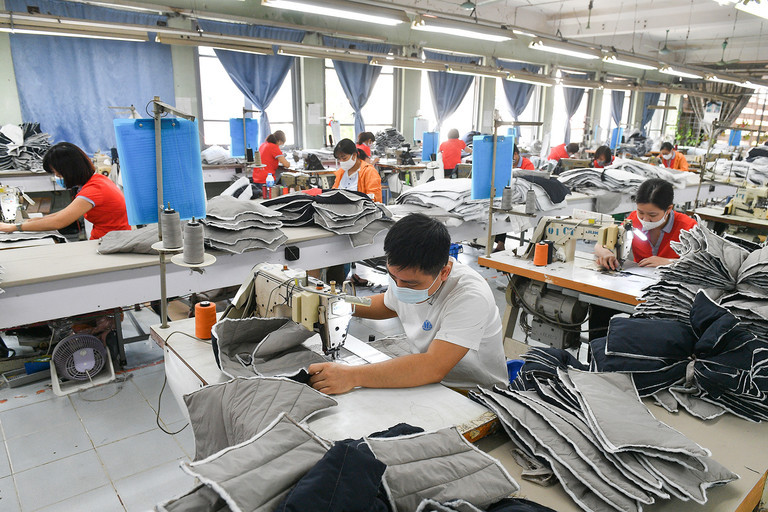
According to the Vietnam Textile and Apparel Association (Vitas), more orders began coming in the fourth quarter of 2023 after many months of interruption as the market warmed up in the Christmas and New Year season. Some businesses received big orders.
The higher purchasing power and lower inventory level have brought high hopes about the market in 2024. However, analysts warn that difficulties will continue to exist amid geopolitical conflicts and inflation around the globe.
Vitas has told its member companies to diversify their markets, products and customer range. The association emphasized the need to satisfy requirements on sustainable development by using digital administration and reducing the use of fossil fuels.
They should also spend money on technologies and automation in production lines to ensure fast delivery and high quality of products. Experts believe this will be one of the strategic changes in the textile and garment industry when the number of large and specialized orders decline.
Also, garment companies have been advised to make investments in the fashion industry.
Experts point out that the competition in the global market is getting stiffer with the appearance of new producers, while total demand is on the decrease. Vietnam remains a ‘bright spot’ in the region with political stability, high production capacity, and high level of workers’ skills, while remuneration policies are better than its rivals.
Bangladesh, for example, has only 200 out of 4,000 factories meeting the LEED Platinum standard. Bangladeshi companies receive support from the country’s mass media in advertisements and image polishing. Meanwhile, the policies and remuneration for its workers remain low, so this won’t be a threat to Vietnamese textile and garment companies in the immediate time.
Vietnam’s textile and garment companies need to further improve their skills, becoming flexible in production, accepting orders that require high and complicated skills because they can bring high added value.
Hoang Thuy Oanh, deputy general director of Hoa Tho Textile and Garment, said the garment market has five typical characteristics.
First, businesses need to take initiative in building solutions, allowing them to respond to new circumstances and reduce possible adverse impact.
Second, Wood Mackenzie has predicted that the global GDP in 2024 may be lower than in 2023 and 2022. The prolonged geopolitical conflicts will put pressure on global consumers, who will cut expenses on non-essential goods, including textiles and garments.
Third, textile and garment companies are seeing opportunities for growth in the US and Japan after Vietnam established comprehensive strategic partnerships with the two countries.
Fourth, consumers are changing their habits, shifting to circular fashion products made sustainably. Therefore, garment products will be more specific, from materials to prices.
Fifth, importing countries will be more interested in importers’ responsibility and members of supply chains. This includes new requirements for clean energy, recycling, manufacturers’ expansion, and carbon tax. This means that more standards and requirements will be set by importers, which will require manufacturers’ to have a higher responsibility for the environment and workers.
Oanh said in new conditions, there must be new policies. The company will focus on market development. Marketing officers will have to survey and update information about market demands to make business plans. High attention will be paid to the US and Japanese markets which could be large markets for the company. At the same time, the company will also carry out trade promotion activities to enter the EU, South Korean and Thai markets.
Le Thi Que Huong, deputy general director of Phu Bai Spinning Mill JSC, said the market would still be pale in 2024, at least until the end of the second quarter.
The company has carried out a transformation process since 2018, when it began spinning recycled yarn. At present, its three recycled yarn factories are running at full capacity.
Luong Bang